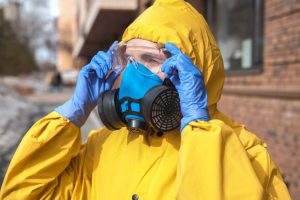A Comprehensive Guide on top OSHA Violations in the Workplace
OSHA publishes the iconic Top 10 list every year, and not much changes from year to year that is why companies need to consider the OSHA violation list to improve the safety protocols in the workplace. OSHA revealed the results of the Top 10 requirements most frequently cited for breaches across all industries for which OSHA standards apply during the National Safety Council 2023 Congress & Expo. In 2023, OSHA issued more than 29,000 violations across its Top 10 categories.
Lorraine Martin who is NSC president and CEO said;
“Although incredible advancements are made in safety each year, we continue to see many of the same types of violations appear on OSHA’s Top 10 list As a safety community, we must come together to acknowledge these persistent trends and identify solutions to better protect workers.,”
What is an OSHA Violation?
An OSHA (Occupational Safety and Health Administration) violation refers to a breach of the workplace safety and health regulations set forth by the United States government. These violations usually occur when employers fail to implement and establish safety standards at workplaces. Establishing safety protocols surely protects employers from hazards, illness, and injuries to ensure a safe working environment.
OSHA violations are categorized into different classes, ranging from OSHA serious violations that pose a substantial probability of death or serious harm to employees to other-than-serious violations that have a direct relationship to job safety and health but are not classified as serious. Penalties for OSHA violations can include fines, citations, and, in extreme cases, legal actions, to promote and enforce workplace safety practices to safeguard the well-being of workers.
5 OSHA Violation Types
OSHA violations are classified into many types according to the type and seriousness of the associated health or safety risks. Here are the top seven OSHA violation types that you should know:
OSHA Serious Violation
A violation in which the employer knew or should have known about the risk, and there is a reasonable chance that the employee could die or suffer serious physical harm.
Other-Than-Serious Violation
A violation that directly affects worker health and safety but is not expected to result in fatalities or major injuries. Administrative infractions and recordkeeping may be part of it.
OSHA Willful Violation
A violation committed with intentional disregard for the requirements of the OSHA Act or with plain indifference to employee safety and health.
OSHA Repeated Violation
If an employer has previously been cited for a particular violation and, during a subsequent inspection, OSHA identifies the same or a very similar violation; it is considered a repeated violation.
Failure to Abate Violation
When an employer neglects to address a safety or health issue that has already been reported within the allotted time frame by the Occupational Safety and Health Administration (OSHA), it is considered a Failure to Abate Violation.
Top 9 OSHA Violations in the Workplace
Here you read the top OSHA rules for the financial year 2023, which concluded on September 30, that are most frequently cited for violations. Both the General Industry (1910) and Construction (1926) standards are always included in this list.
Fall Protection
One of the most frequent causes of fatalities and major injuries at work is falls. Employers are required to arrange the working environment such that workers cannot fall from raised workstations, above platforms, or into floor and wall openings. So, it is important to provide safety prevention tips to reduce the incidents. Must comply employees with the techniques to prevent falls, make sure the surface is stable to avoid falling and consider steep roofs and low slopes to avoid falls.
Scaffolding
Scaffolding is the second-highest OSHA violation according to several reports. There were almost 4,533 injuries have been reported as serious violations. Employers must ensure that scaffolding is designed, built, and loaded by a qualified individual who will be equipped with safety protocols in order to protect workers. So, when scaffolding operates at heights over ten feet, the construction workers should pay particular attention to this OSHA guideline. For instance; the use of guardrail supports, limiting worker access in the scaffolding areas, and considering the weight capability of scaffolding structures.
Hazard Communication
A safe employee is one who is knowledgeable. Employers must have to tell workers about the kind of chemicals that are used in the workplace and their risks. The OSHA advised that chemical importers and manufacturers are required to create safety data sheets and labels that accurately inform their clients about the risks. It is employers’ responsibility to ensure that employees have specified knowledge about chemical products and their harms. Additionally, train workers to handle chemical products appropriately.
Ladders
Everyone understands how to securely climb a ladder, right? Because they are so ubiquitous, many people take ladders for granted. However, in FY 2022, OSHA inspectors found 2,143 infractions of the ladder safety protocol. Companies must be aware of the regulations in order to keep workers safe when using the different types of ladders used in the workplace (self-supporting portable ladders, job-made ladders, non-self-supporting portable ladders, etc.
Lockout/Tagout
From FY 2021 to FY 2022, lockout/tagout violations increased in percentage terms, moving upwards from place six to five on OSHA’s list of most-cited violations. Maintaining heavy equipment is necessary for organizations to reduce risk and workplace hazards.
Machine Guarding
Machine guarding is also the most prominent OSHA violation that has been cited again and again. However, the specification for machine guarding is more complex, which is why it is essential for employers to take safety measures into account to reduce injuries and mitigate workplace hazards. OSHA publishes resource materials on machine guarding that include safety standards and virtual tours of specific machines to reduce accidents and injuries.
Powered Industrial Trucks
To reduce the number of mishaps, injuries, and fatalities connected to powered industrial vehicles, the Power Industrial Truck Regulation (which covers forklifts, lift trucks, and jacks) mandates that all employees who operate or use a Powered Industrial Truck be trained and must OSHA certified.
Respiratory Protection
In FY 2021, Respiratory Protection is another most common violation that was reported (2,527 infractions). It is now the third most frequently reported OSHA violation, with 2,185 infractions in FY 2022. One of the most important pieces of safety gear you can give your staff is a respirator if they work in dangerous environments. According to OSHA regulations, employees must wear a respirator or other protective equipment to prevent them from breathing in hazardous materials including chemicals and pathogenic particles.
Eye and Face Protection
According to OSHA violation reporting in 2022, the eyes and face protection violation is ranked #9 with 1401 total violations. It has been estimated that OSHA eye injuries cost companies more than $300 million annually in worker compensation, medical costs, and lost productivity. The major objective of OSHA’s eye and face protection regulations for general industry, shipyard work, long shoring, and construction is to prevent blindness and different eye-related injuries.
To Wrap Up the Things
OSHA violations can result in penalties, fines, and increased regulatory scrutiny. Employers are responsible for maintaining a safe work environment, and compliance with OSHA standards is crucial for protecting the well-being of employees. Regular workplace inspections, employee training, and prompt correction of identified hazards are essential elements of a robust safety program to prevent OSHA violations.






